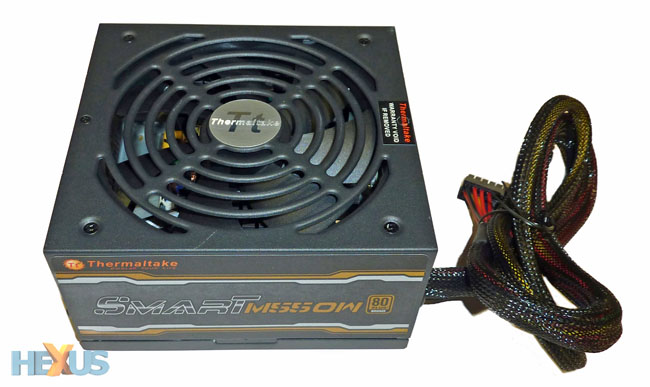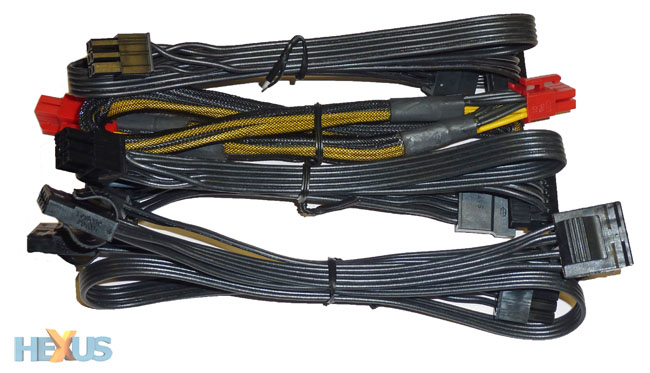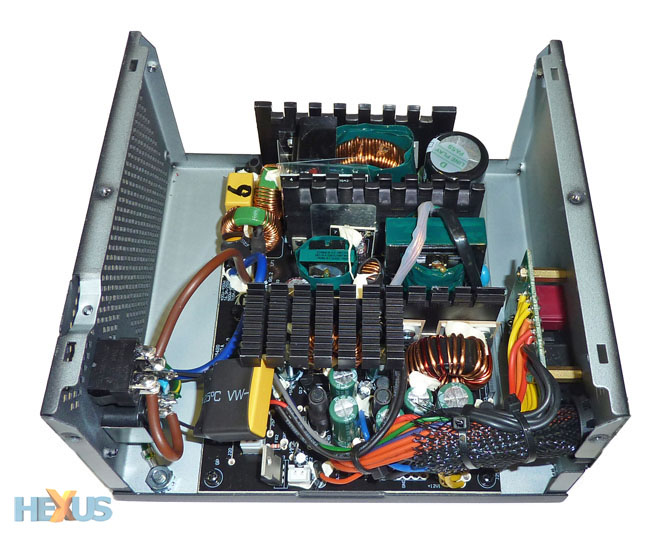Cheap and cheerful
The architecture of graphics cards changes on an almost-yearly basis, thereby putting significant pressure on NVIDIA and AMD to come up with new designs. Intel spends a hideous amount of money on research and development for new chips. Sometimes slow evolution a good thing in the PC industry. PSUs are a case in point. Their specification has a minor facelift now and then, and there's presently a preponderance to shove as much amperage down the 12V rails as possible, but a PSU released 18 months ago is more than likely able to do the required job now, especially with energy efficiency very much the buzzwords of the industry.
Every manufacturer wants in on the PSU business. Unlike the DRAM and SSD market, which face quotidian price fluctuations, PSUs are stable in every sense of the word. There are also good margins to be harvested from a solid line-up. Really, if you can, there's little reason not to try your hand at releasing a PSU... or nine. Most PSU 'manufacturers' that you're familiar with tend to specify a certain design and instruct a large-scale Taiwanese or Chinese PSU-builder to supply a contracted number of units; there's little merit with investing in a PSU-making plant if it's not your primary business, and this is why so many PSUs look alike.
Better known as a chassis manufacturer, Thermaltake has eight separate PSU series that span from 350W to 1,500W. Sitting in the middle of the stack, from both price and performance standpoints, is the Smart series. The range takes in nine PSUs of which five offer modular cabling. We have the M550W in review for today.
Giving you a bit of background, looking at 1kW PSUs is fine and dandy for the ultra-enthusiast, but factor in the understanding that even an overclocked Intel Core i5 2500K and GeForce GTX 680-toting system pulls around 250W under either 2D or 3D load and you realise that 550W, if distributed correctly and stably, is more than ample for most PC builds.
Available for around £55 and therefore priced appropriately against its competitors, the M550W is rated to deliver full capacity at an ambient 40°C. Based on a single 12V rail design and offering 80 PLUS Bronze efficiency (82-88 per cent at 20-100 per cent load), the 14cm fan dominates the top. Build quality is decent for a PSU in this class and the two pre-plumbed cables are the motherboard-orientated 24-pin ATX and 8-pin ATX.
The supply is intended to service mid-range builds. There are just four modular ports and Thermaltake makes it manifestly clear where the graphics card-powering PCIe cable plugs in.
Speaking of which, there are two runs of SATA cables. Ranging from 50cm to 80cm, each cable contains three SATA plugs. A third cable adds in four Molexes and an FDD plug. We like the fact that these modular cables are flat, making it easy to manoeuvre them around a chassis and aiding a tidy build.
The red graphics cable contains an 8-pin and 6+2-pin PCIe connector. The first is positioned 50cm away from the PSU-side port while the second a further 15cm. There's no problem in connecting it up to a graphics card housed in a tower chassis. Though it is possible to run two mid-range cards from this supply, Thermaltake doesn't have the appropriate certification from either AMD or NVIDIA; you'll need to invest in a 650W model for that. The relatively low wattage precludes dual-card usage, one would think, so let's see how it's configured.
| Amps/watts and voltage | 3.3V | 5V | 12V1 | -12V | -5VSB |
|---|---|---|---|---|---|
| Rail amps | 24A | 15A | 42A | 0.5A | 3A |
| Maximum rating | 105W | 504W |
6W | 15W | |
| Maximum rating continuous | 550W |
||||
Armed with the usual current, voltage, power short-circuit protections and taking the available connectors into account, we reckon you could comfortably run a couple of Radeon HD 6850s or a single GTX 680 card from the supply: 42A is nice and healthy on the single 12V rail.
The TT-1425 fan is reckoned to spin at a maximum 1,600rpm with a noise rating of 38.5dB. Reduce the load to a reasonable 275W and it reduces speed to some 750rpm and 22dB, according to specifications.
Examining the guts of the supply, the transient filtering is good, comprising of two Y and X caps. The active PFC is filtered by a Japanese-made (electrolytic) cap rated at 85°C. Moving around, the 3.3V, 5V and 12V lines' output, once the AC supply has been rectified, is filtered by a gaggle of smaller caps nearer the bottom of the picture, each rated to 105°C. Decent rectifying and filtering means that AC ripple should be reasonable for a PSU in this class. Lastly, as an aside, the soldering's pretty good all round.













